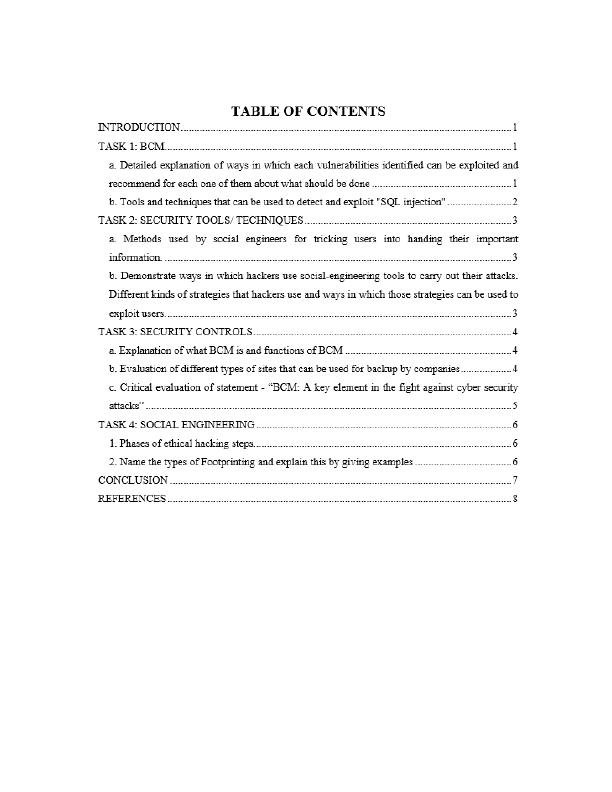Cyber Security: Vulnerabilities, Exploitation, and Security Controls
Assessment of learning outcomes 1, 2, and 4 through a 2500-word individual examination on cyber security threats, security controls, and professional, social, ethical, and legal issues.
10 Pages2384 Words453 Views
Added on 2022-11-24
About This Document
This assessment focuses on the identification of vulnerabilities in cyber security, ways to exploit them, and security controls to protect against attacks. It covers topics such as missing authorization, download of codes without integrity checks, broken authentication and session management, missing data encryption, cross-site scripting vulnerabilities, SQL injection detection and exploitation, methods used by social engineers, tools used by hackers, BCM and its functions, types of backup sites, and the role of BCM in fighting cyber security attacks. The assessment also explains the phases of ethical hacking and different types of footprinting.
Cyber Security: Vulnerabilities, Exploitation, and Security Controls
Assessment of learning outcomes 1, 2, and 4 through a 2500-word individual examination on cyber security threats, security controls, and professional, social, ethical, and legal issues.
Added on 2022-11-24
ShareRelated Documents
End of preview
Want to access all the pages? Upload your documents or become a member.
Ways of Attacking a Web Application in PHP: SQL Injection, XSS, Session Hijacking, Directory Traversal, and Remote File Inclusion
|9
|1493
|176
Penetration Testing Penetration Testing
|52
|9148
|85
Contemporary World Application 2022
|10
|541
|10
Threat Detection Technique
|6
|1177
|99
Security Evaluation for WidgetsInc Web-Store
|11
|4054
|388
Cross Site Scripting attacks take place when a specific untrusted
|4
|770
|349



